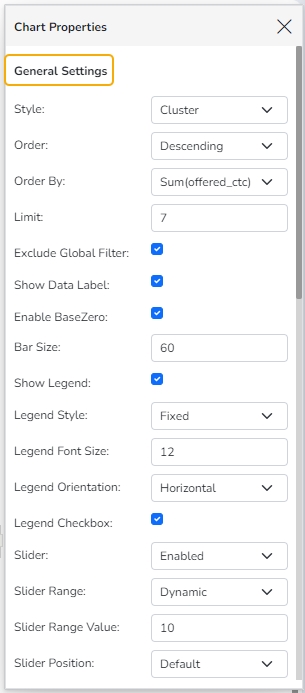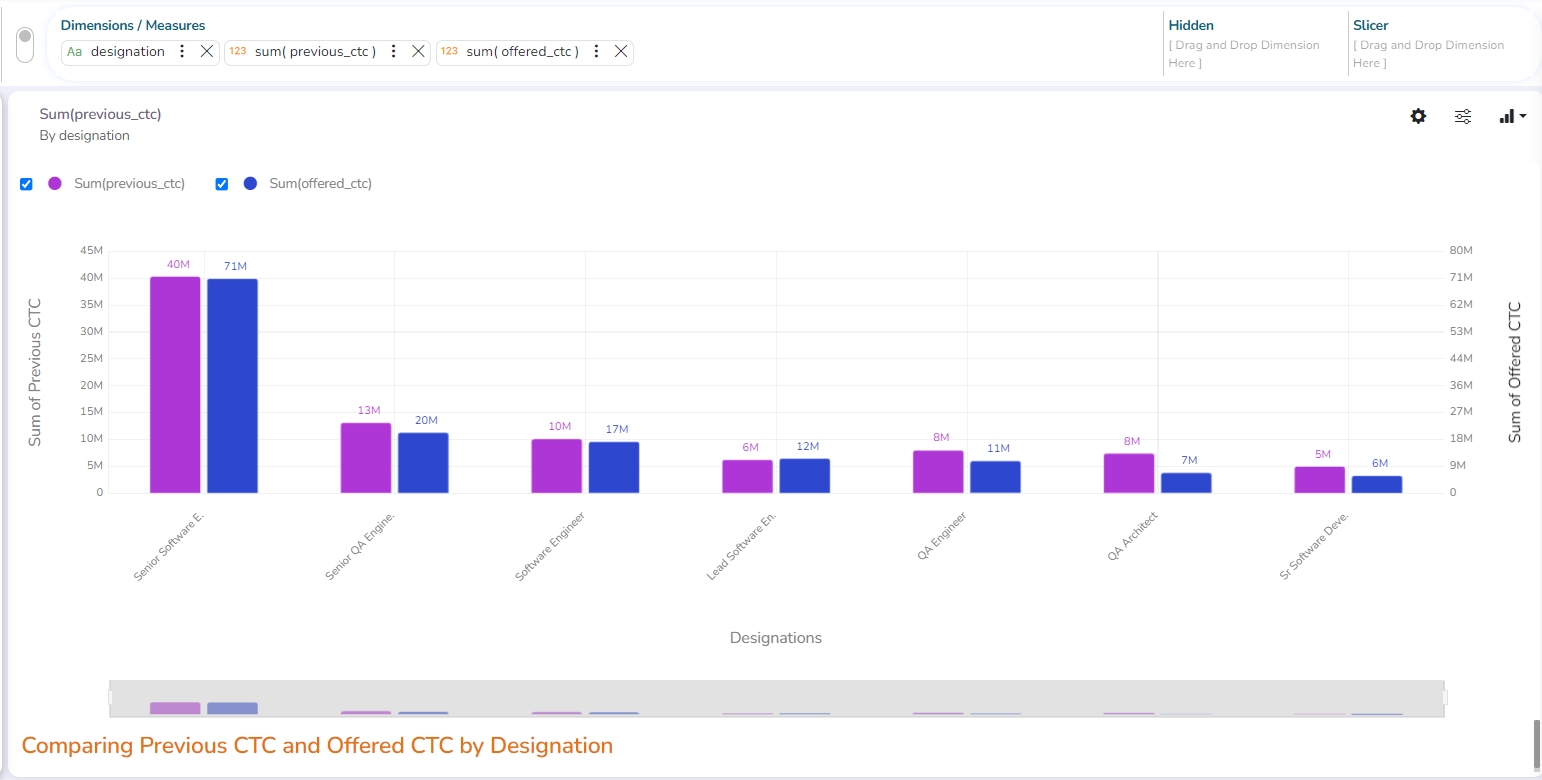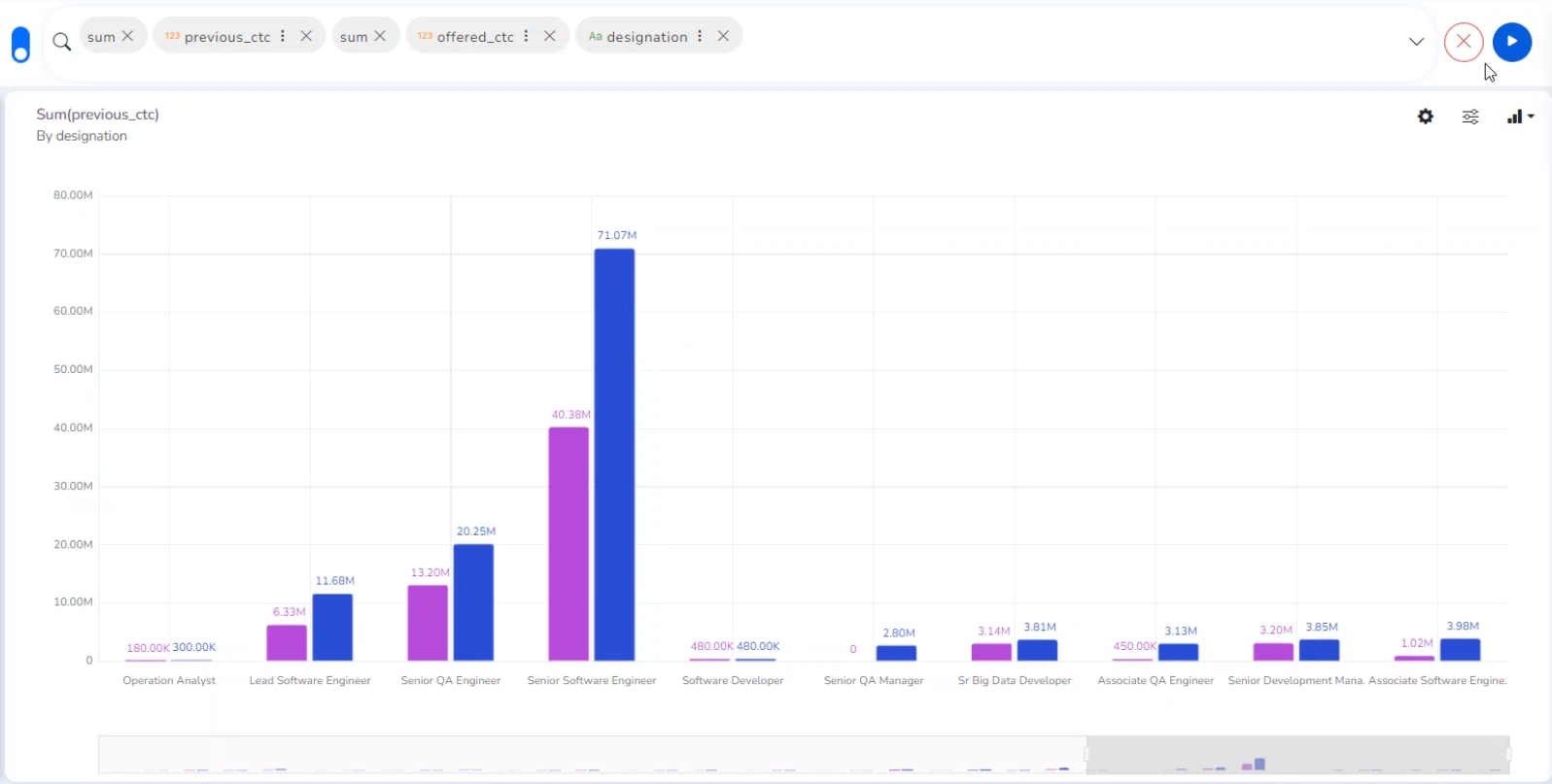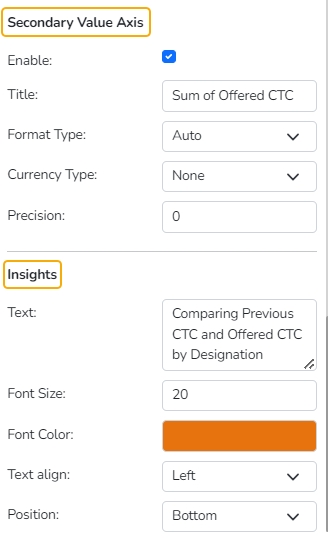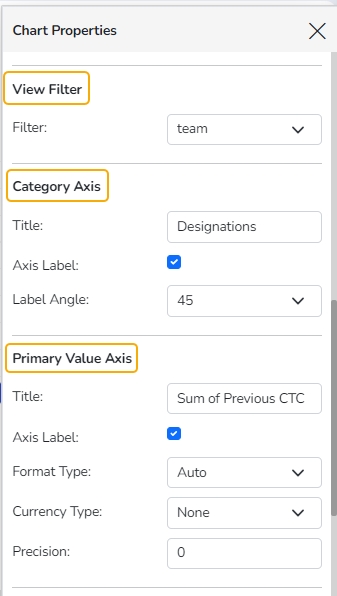
Column charts are used when users want to compare the values of individual data points with another. They help in bringing out the highs and lows of the data set.
Check out the illustration on applying various Column Stack chart properties to a View.
Best Situation to use Column charts: Column charts are suitable for displaying data sets with negative values
Example: To find the best and worst performers in an organization
Variations of this chart
Use stacked Column charts: Where multiple categories can be clubbed together on top of each other, which makes addressing numerous questions easier.
Use columns side by side: Where comparison between multiple categories becomes easier instead of toggling between charts.
Add color for quick insight: Displaying the columns with colors help users pay immediate attention to the essential tasks.
Style: Select a style to display the data (the provided choices for this field are: Cluster, Stack, Stack Percentage, Stack Overlaid)
Order: Select a sequence for displaying information
None
Ascending
Descending
Manual Sort (Users need to sort the dimensions by using the indicator signs manually)
By selecting an order (ascending or descending), the user needs to configure the following fields:
Order By- Select a value option from the drop-down menu to order the data sequence.
Limit- Set a number to display the requested data by this limit.
Exclude Global Filter: The view gets excluded from the Global Filter condition by putting a checkmark in the box.
Show Data Label: The data label is displayed using a checkmark in the given box.
Enable Base Zero: Base value gets presented from Zero by putting a checkmark in the given box.
Show Legend: Displays legend by turning on the radio button. After enabling ‘Show Legend,’ users need to select the following information:
Legend Style: Select one of the following options using the drop-down menu.
Fixed
Floating
The following fields appear when the selected Legend Style option is Fixed.
Legend Font Size: This option allows to increase or decrease the font size of the legend.
Legend Orientation: This option appears when ‘Show Legend’ is enabled, and the selected ‘Legend Style’ is Fixed. Users need to select an option from the given choices using the drop-down menu.
Vertical
Horizontal
Legend Checkbox: Enable this option with a checkmark to add the checkbox beside the Legend.
Slider: Provide a checkmark in the box to enable the Slider.
Fixed Slider Range: Enable this option to fix the slider range.
Filter: Select a filter condition using the drop-down menu (E.g., the ‘team’ option is selected as a filter condition in the following image).
Please Note: The selected View Filter option will be reflected to customize the View data after adding the View to the report.
Title: Provide a title for the axis. (E.g., ‘Designation’ is the title for the category axis displayed in the following view).
Axis Label: Enable the category axis label by putting a checkmark in the box.
Label Angle: Select a display angle for the axis label. (the provided choices for this field are: 0, 45, and 90 angles).
Title: Provide a title for the Primary Value Axis.
Axis Label: Enable the Primary Value Axis label by turning on the radio button.
Format Type: Select a desired format type from the drop-down menu (the provided options for this field are: None, Auto, Percent, Thousand, Lacs, Crore, Million, Billion, Trillion, Quadrillion).
Currency Type: Select a currency symbol to be displayed in the view (the provided options for this field are: None, Rupees, Euro, Pound, USD, Yen, Cent).
Precision: Set the after-decimal value (It displays up to 5 precision).
Properties for the Secondary Value Axis are displayed when two measures are dragged on the canvas.
Enable: Put a checkmark in the box to enable the Secondary Value Axis.
Title: Provide a title for the Secondary Value Axis.
Format Type: Select a desired format type from the drop-down menu (the provided options for this field are: None, Auto, Percent, Thousand, Lacs, Crore, Million, Billion, Trillion, Quadrillion).
Currency Type: Select a currency symbol to be displayed in the view (the provided options for this field are: None, Rupees, Euro, Pound, USD, Yen, Cent).
Please Note:
Users don't get the Currency Type field when the selected Format Type is Percentage.
The users must configure the Series Properties of the dragged measure after enabling the Secondary Value Axis to display the same in the chart.
Text: Provide any information regarding the chart. If any digit or character is required to be highlighted, put it inside two asterisks. (E.g., *70%* or *skills*).
Font Size: Set/modify the Font Size of the Insights text.
Font Color: Select a Font color for the Insights Text.
Text align: There are three alignments to align the text.
Left
Right
Centre
Position: There are two options to position the text.
Bottom
Right

